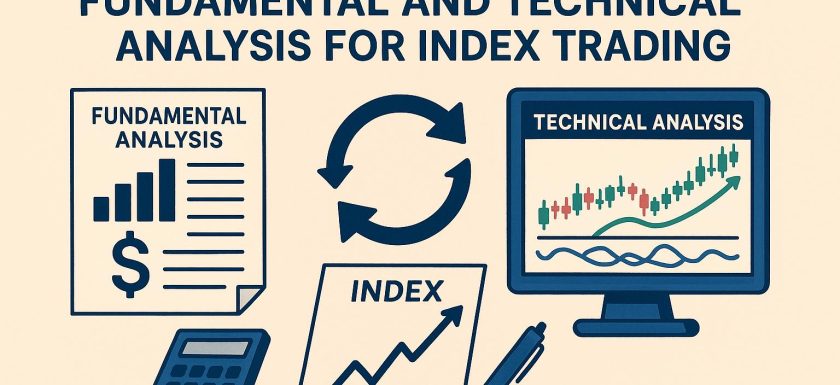
Combining Fundamental and Technical Analysis for Index Trading
In index trading, both fundamental and technical analysis offer valuable insights that can maximize returns while managing risks effectively. With each method possessing its unique strengths, a combined application presents a more well-rounded approach to understanding financial markets. Integrating these analyses not only offers a deep dive into market dynamics but also provides a more comprehensive understanding that can lead to more informed decision-making.
Understanding Fundamental Analysis
Fundamental analysis is a methodical approach to assessing an index’s value by examining the economic factors that influence it. This type of analysis delves into various elements such as economic indicators like GDP growth rates, unemployment figures, and inflation rates, along with corporate earnings and interest rates. Traders generally initiate this analysis with a macro-economic analysis, which allows them to evaluate the general health of the economy. This broader understanding provides a baseline before dissecting a specific index’s components to analyze individual performances.
Fundamental analysis is especially significant for long-term investment strategies. It assists traders in determining the intrinsic value of an index, thus making it easier to detect potential undervaluations or overvaluations. For traders keen on gathering intricate insights, turning to financial news platforms such as Bloomberg and CNBC can be immensely beneficial.
Exploring Technical Analysis
In contrast to fundamental analysis, technical analysis focuses primarily on the price movements and trading volumes to predict future price behavior. This approach leans heavily on chart patterns, technical indicators such as moving averages and the relative strength index, along with an examination of historical price data. By scrutinizing past performances, traders can pinpoint trends and potential reversal points, granting them an edge in anticipating market movements.
Technical analysis is frequently preferred by short-term traders owing to its effectiveness in timing entries and exits. Numerous charting software and platforms offer technical analysis tools; among the popular ones are TradingView and StockCharts. These platforms provide a slew of functionalities that assist traders in analyzing market patterns and making informed trading decisions.
Integrating Both Approaches
For many traders, the dilemma often lies not in choosing between these analyses but in blending them to derive a more informed trading decision. Here’s an examination of how one can adeptly integrate them:
1. Establishing Market Sentiment
Begin by adopting fundamental analysis to comprehend the current economic climate along with its impact on broader indexes. This foundational understanding helps identify long-term trends and assess market volatility, crucial in setting the stage for more targeted trading strategies.
2. Identifying Trading Opportunities
After formulating a macroeconomic perspective with fundamental data, the next step involves employing technical analysis. This component fine-tunes your entry and exit points, facilitating an optimized trade setup. This meticulous approach ensures that you do not rely solely on general economic indicators, which might not capture immediate market nuances.
3. Continuous Monitoring and Adjustment
The integration of both analyses is not a one-time endeavor; it necessitates continuous monitoring. Regularly updating your fundamental data and accordingly adjusting your technical strategies is crucial. Unforeseen situations, such as sudden geopolitical developments, have the potential to alter fundamentals, thereby requiring immediate reassessment of technical positions.
Benefits of the Combined Approach
The unification of fundamental and technical analysis confers a balanced view that acknowledges both economic rationality and market psychology. This dual approach typically results in improved risk management, as the strengths of one analysis system can compensate for the weaknesses of the other.
By equipping traders with the tools to adapt to varying market environments, the combined approach offers a robust framework beneficial for both short-term and long-term strategies. This synergy enhances index trading strategies, allowing traders to make well-informed decisions that have the potential to yield higher returns.
In conclusion, combining fundamental and technical analysis forms a sound strategy for index trading. It molds a holistic perspective that encompasses both the broad economic factors and the intricate market dynamics. Professional financial advice should always be considered to tailor these strategies to meet individual needs and objectives, ensuring they align with your unique financial goals.
This article was last updated on: September 11, 2025
